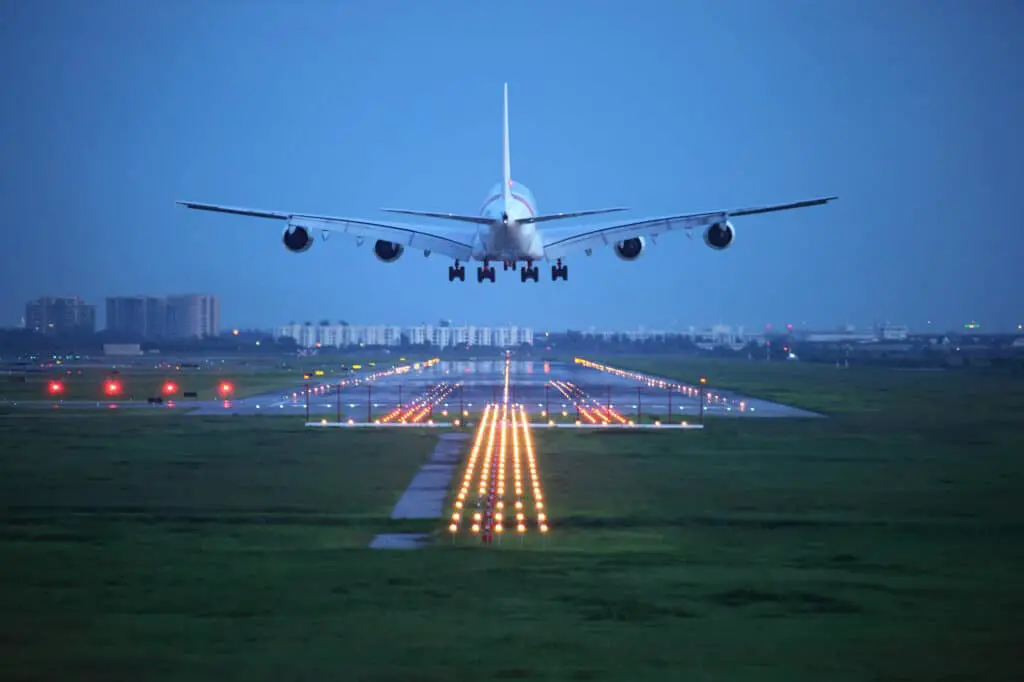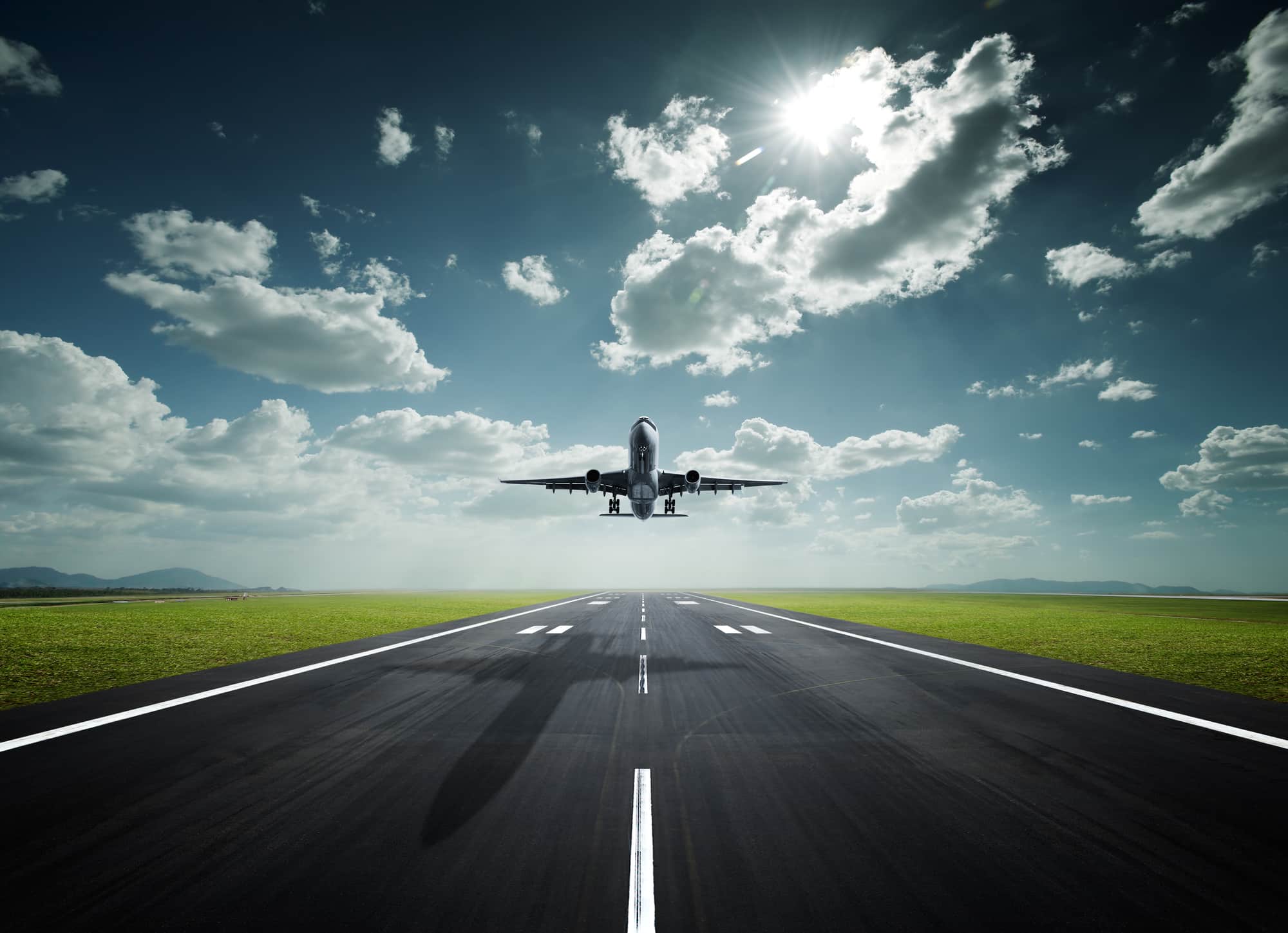Most of us have been on an airplane at some point in our lives. As the plane begins to speed down the runway, sometimes it can feel like an eternity, and other times you start to wonder if there’s even enough track left!
In this article, we’ll look at how long a runway is. We’ll also investigate the reasons for this, as well as answer any other related questions.
Firstly, to avoid any confusion, a runway is defined as a “strip of hard ground from which an aircraft can take off and land”. Whilst you’d think the length of a runway will be the exact same every time, this is not always the case.
In fact, the average length needed for a runway is roughly 1.5 to 2 miles. There are a number of factors that will determine the length such as the amount of people on the plane, size of the aircraft, type of plane, and even elevation.
And for those who are already curious and wondering, the longest runway in the world is the Qamdo Bamda Airport in Tibet, China at 5,500 meters (18,045 ft).
On the other hand, the trophy for the shortest runway is held by Juancho E. Yrausquin Airport, which can be found on the Caribbean island of Saba. At just 1300 feet long, it’s only marginally longer than the length of three football pitches placed next to each other. According to CNN, “only 900 feet [is] usable.”
Table of Contents
Why Is the Length of a Runway Important?

As many large aircrafts use a runway to get airborne, it’s important that they are built with enough length to ensure a safe take-off and landing. Given that some planes can be quite heavy, more time will be needed to generate the necessary thrust for lift-off. This is why the minimum length is 8000ft, although this is usually closer to 10,000ft in most airports around the world.
Whilst aircrafts don’t usually use the whole runway, the extra length serves mostly as a precautionary measure. One reason is because larger aircrafts tend to heat up their brakes faster, and it may take slightly longer to bring the aircraft to a complete stop.
The final reason that runways need to be so long, is so that there is enough space for other aircrafts to move around and prevent unnecessary delays. This is why a lot of airports now have more than one operating runway.
Why Can Runways Vary So Much in Length?
There are many factors that are considered when creating a runway, which we’ll now take a look at below.
Topography
Like with the example of Saba, some islands are so small that there physically isn’t enough flat and stable land for a traditional runway to be built. This of course affects the length of the runway, as well as the type of aircrafts allowed to land. Relevant to this is also where the runway is built.
For example, many runways made in the jungle often use the grass and dirt from the ground as the landing strip, as it provides a soft and strong base for aircrafts. Since these types of runways can only handle smaller aircrafts, they tend to be a lot smaller.
Airport Demand and Size
Another reason runways can vary in length is due to how busy that particular airstrip will be. When it comes to bigger airports, traffic control is vital to allow smooth daily operations with minimal delays and issues.
So a longer runway is typically made in these cases to keep things easier to organize. This is especially useful at night, when visibility can be affected.
On the other hand, for the smaller and less visited destinations, it makes sense to keep it shorter as there is less demand. Usually only small aircrafts can use these runways, so from a financial view it makes sense to keep it short.
Public vs Private Airstrip
Another big reason runways can vary in length is due to what their main purpose is. Public airports tend to be a lot busier and have much bigger planes, which often operate non-stop. These will typically have a longer runway, which is needed for organization and also as bigger aircrafts need more time to lift-off.
Private airstrips also have many uses, however the aircrafts that use them tend to be much smaller. Because they can get airborne much faster, the runway here is usually built much shorter compared with those of airports.
Other Things to Know About Runways
When Was the First Runway Made?
The first ever flight was in 1903, when the Wright Brothers ascended into the never-before explored skies. However it wasn’t actually until 1916 that the first real runway was made. Located in France, it was built to aid the manufacture and development of aircrafts during WW1.
What Are Runways Made Out Of?
The material a runway is made out of can also affect its total length. The majority of modern day runways are made out of concrete, which is strong enough to resist any damage from landing aircrafts. Another commonly used surface is asphalt.
Having said that, there are of course other types of runways (usually in more rural or remote areas) that are created on natural surfaces such as dirt or gravel. These are only suitable for smaller aircrafts, however.
Could Runways Become Even Longer?
With increases in technological development as well as commercial demands, planes seem to be getting bigger and bigger every year. Whilst some are being made to be more streamlined and efficient, the general pattern is that most are getting larger. As a result, aircrafts are getting heavier, meaning the time for take-off is only going to rise.
So if this trend continues and these bigger aircrafts become more and more relied upon, then most likely runways will need to be further extended in length to support these.
Final Thoughts
And that’s all for our guide to the length of a runway. Since the first ever flight in 1903, runways have featured prominently in both commercial and private uses.
In this article we’ve explored how long a runway is, and the reasons that they can often vary. We’ve also looked at other things to know about runways, including what they are made of, as well as the potential for runways to become even longer in the near future.

